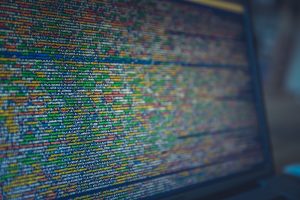On-demand streaming and YouTube ought to have spelled the end of live music and concerts. Why would anyone go to an event when they could stay at home and listen to the same music — sometimes streamed live from the venue — in the comfort of their home? Conferences and meetings, too. Why would you go to an event when you can communicate with everyone via Skype, email, instant messaging, and online forums? Live meetings and events was predicted to be history.
The rise and rise of live events
But live events are not dead. They’re not just alive and kicking, either, they’re thriving. It turns out that in a world where we can communicate without ever leaving the building, actually meeting face-to-face, and experiencing things together has become much more valuable. Many companies are expanding their knowledge sharing through building online communities to facilitate and ensuring ongoing education and sharing of best practice.
People are even using their leisure time for meeting about work. In Heidelberg, on 6th May — a Saturday! — there was a full house for the data science meet-up and hackathon.
SAS, too, works with universities and schools. SAS Curriculum Pathways is available free to support the teaching of STEM subjects, and SAS 9.4 is also available in a University edition, free to students, academics and independent learners. This ready access to resources that are widely used in industry means that students are more work-ready: they have the skills employers want.
And returning to the importance of live events, students and other learners are regular attendees at hackathons, the large-scale competitions to allow rapid concentrated focus on particular real-world problems. This gives them the experience of working with real data, and under conditions that require compromise, close team-working, and tolerance of errors. There are huge opportunities to network at hackathons—or to join GatherIQ where people volunteer to get involved to help using data to solve humanitarian issues.
“This is not the end…”
But if live events are not dead, something else has changed: the way that we communicate before, during and after the event. Events are no longer a single channel, one-off occasion. Instead, they are better considered a single data-point in the ongoing life of a community. The community might start out as a meeting of minds on social media, or perhaps as a group chatting on an online forum such as one of the SAS Communities.
Even at those events, those not present at the event may still be engaged, via LinkedIn, Twitter or other social medias to gain insights. Live-tweeting has become an important part of any event, and after a live meet-up or event, of course, the discussion does not stop. The group continues to communicate and build relationships online and these will also be used as inputs for future events. Forums are a good way to stay in touch outside events, and to learn and share experience and thoughts.
Now that so many of us work remotely, and have less contact with our immediate colleagues, communities and networks are even more important. We also have the opportunity to expand our network beyond natural borders to connect with even more facing the same challenges – getting more inspiration and becoming better at our jobs.
Social Media and Communities are also replacing emails as a communication platform and are used as an easy way to be informed about events etc, rather than browsing through web pages after webpages. Webinars and e-learning are emerging events and much more interactive than just watching youtube, where you can interact and experience almost being live with questions and interactions with the teacher and other student from around the world with similar interests.



2 Comments
A topic that is near and dear to me... community and particularly the SAS community. I look forward to participating in the #SASchat. In the meantime, get involved at communities.sas.com - here how: https://communities.sas.com/t5/Getting-Started/3-Ways-to-Get-Involved-with-SAS-Communities/ta-p/249735
It was a great #communities #saschat session... for those that may have missed it, scroll through the tweets and please reply too! https://twitter.com/search?f=tweets&vertical=default&q=%23saschat%20since%3A2017-06-28%20until%3A2017-06-30&src=typd